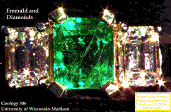 Beryl
Beryl
|
Quick Links
What is Beryl?
What varieties exist?
Flaws / cuts
Geographic sources
Synthetics
Treatments |
What is Beryl?
It's a silicate mineral with an unusual composition:
-
Beryl contains the element beryllium.
-
It is a ring silicate - the silicate tetrahedra are linked to form rings!
-
Beryl commonly grows as elongate
crystals with hexagonal cross sections.
|
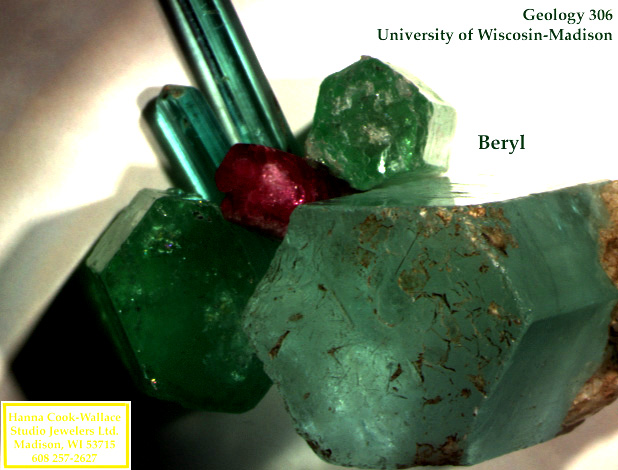

See a movie on a beryl structure!
|
Emerald:
-
color: Green
-
another example of an emerald,
and another
another!
and another emerald
sample.
-
emeralds can differ greatly in price
and size as a consequence of thier depth and color
-
due to presence of Chromium (Cr); pale green due to iron (Fe) impurities
that absorb red (transmit green) and fluoresce red
-
Comments
|
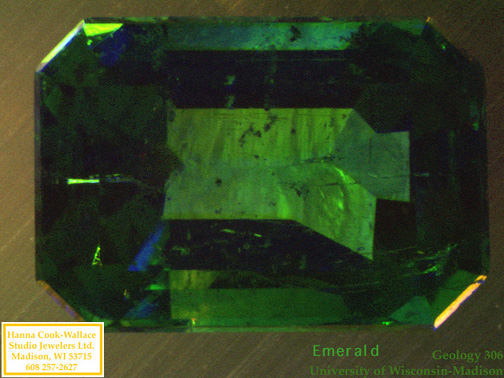 |
Aquamarine
-
Aquamarine is usually flawless. Next to emerald, it is the most highly
prized of the beryls.
-
color: pale
to medium
blue (Latin for sea water); Another example
of aquamarine.
-
Color is due to presence of iron (Fe) in two oxidation states (ferric and
ferrous) and the charge transfer between these ions.
-
Heat treatment involves conversion of ferric to ferrous iron.
|
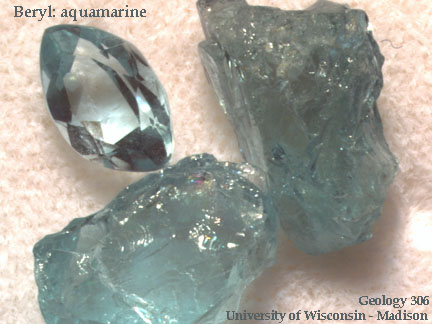 |
Heliodor (Golden
Beryl) ('present of the sun')
-
color due to presence of Fe-O charge transfer (and rarely, due to uranium)
-
rarity and value: rarer than aquamarine, but less valued
-
largest gem: 2054 ct (Smithsonian)
|
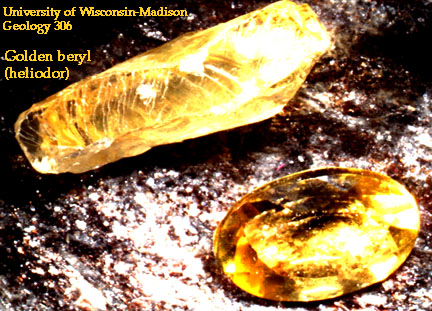 |
Morganite (named after a mineral collector)
-
morganite
is
typically a soft pink / violet, rare peach and salmon
-
color due to the presence of manganese (Mn)
|
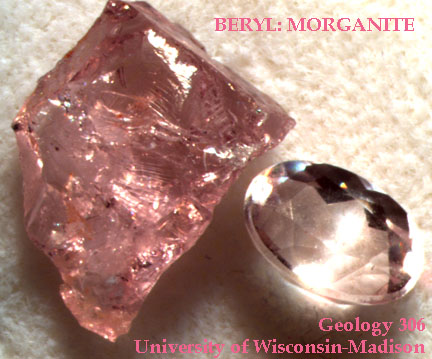 |
Red
Beryl
-
color: red
-
due to the presence of manganese (Mn)
|
|
Goshenite
(named after Goshen, Massachusetts)
-
color: colorless
-
use: used in eyeglasses
|
|
Maxixe
-
color: deep blue, fades
-
involves irradiation effects and nitrate and carbonate groups in channels
in the structure.
|
|
Flaws
Emerald
-
crystals
of emerald are very brittle
-
most emeralds contain flaws:
-
inclusions
(multiphase inclusions); may reveal geographic location
-
cracks
-
many emeralds are oiled, see below
-
cutting emerald: the
emerald cut
-
was developed specifically because emeralds are very prone to cracking
when knocked.
-
cut with table perpendicular to the length of crystal -> yellowish green
-
cut with table parallel to the length of the crystal -> bluish green
Other beryl gems
-
generally far more perfect than emerald
-
few cracks or inclusions
|
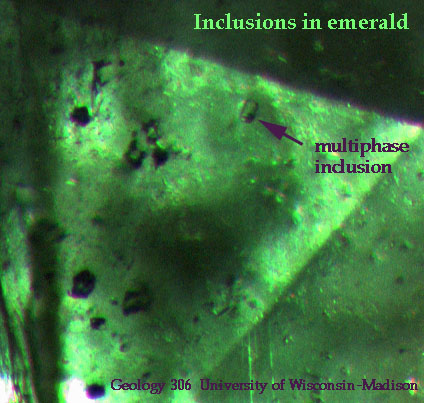 |
Geologic and Geographic origin:
Geologic: requires source of the element Beryllium
!
Geographic:
-
Most famous: Colombian - from veins in shales and limestones
-
Ancient sources: Egypt (Cleopatra's emerald mines; 2000 B.C.); Austria
-
Other: Africa, Pakistan, Brazil, USSR
|
|
Synthetics
-
Emerald
synthesized since 1848 (no facetable gems until 1934)
-
generally not economic to synthesize aquamarine etc.
-
3 common methods: (details not required for EPS2 students)
-
Catham (since 1940) and Gilson flux
method
-
Linde hydrothermal
method
-
Lechteitner hydrothermal overgrowth method.
Make sure you understand the meaning of "hydrothermal"!
|
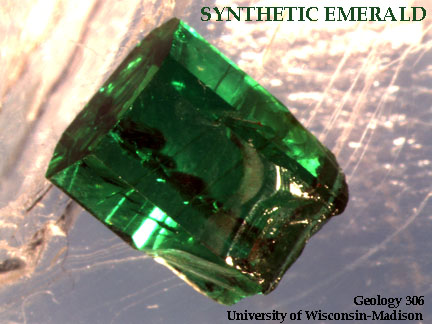 |
Treatments
-
heat treatment
-
(irradiation)
-
most aquamarines
in jewelry are heat treated because the natural blue color is pale
-
oiling : introduction of oils into fractures that intersect the surfaces
of faceted emeralds. This treatment makes the flaws less obvious and enhances
the general appearance of the stone.
The treatment or enhancement most commonly encountered is colorless
cedar oil. Colorless Canadian balsam, Opticon and other natural and synthetic
oils or resins are also in common use. Emeralds treated with these substances
are certified as"enhanced or treated".
Using green oil is considered dying. There are certain inferior quality
Indian, African, Brazilian, and possibly some Colombian emeralds which
do get dyed. It is a fairly common practice with low end beads made in
India (information provided by Jeffery Bergman, JLB@thaiphotovoltaics.com).
For the FTC guidelines on treatment disclosure, click
here
|
|
| Trivia |
|







 Beryl
Beryl 
 Gallery
of beryl images!
Gallery
of beryl images!